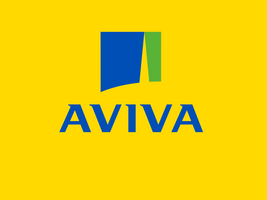Title Page
-
Conducted on
-
Prepared by
-
Location
-
To view our Loss Prevention Standard that supports this checklist please view the following link: https://broker.aviva.co.uk/documents/view/aviva_boosted_potable_water_supplies_non-fire_fighting_lps.pdf
Design and Installation
-
1.Are all companies and individuals engaged to work on your plumbing installations affiliated to and members of approval schemes, such as:<br><br>• CIPHE (Chartered Institute of Plumbing and Heating Engineering) Approved Contractor Scheme<br>• CIBSE (Chartered Institution of Building Services Engineers)<br>• Member of the Water Industry Approved Plumbers' Scheme (WIAPS) or similar?
-
2. Have measures been considered to minimise potential water damage especially when using modern methods of plumbing including the boosted water system?
-
3. Have measures been considered to minimise potential water damage especially when using modern methods of plumbing including the boosted water system?
-
4. Has consideration been given to theinstallation of several small pumps arranged in parallel rather than a single large, variable speed drive pump?
-
5. During the construction processes, was/is phased testing and inspection of pipework carried out as the build progresses?<br><br>• On a floor-by-floor basis?<br>• On a zoned orsectional basis?<br><br>Particularly where installations will ultimately be concealed in wall, floor or ceiling voids on completion.<br>Are these formally recorded?
-
6. Following on from question 5 above, have full inspections and full commissioning tests been carried out on all new systems in their entirety?<br><br>• Including all equipment and fittings at their working pressure?<br>• In line with equipment supplier's guidelines?<br>• For a minimum commissioning period of not less than 8-hours and attended for its duration?
Control Measures
-
7. Has a formal water services based risk assessment been completed?<br><br>Are there formal drawings of the entire network, and it these include the following:<br>• Isolation valves?<br>• Drain lines?<br>• Pressure reducing valves?<br>• Pressure relieving valves?<br>• Vacuum breakers and other components of the network?
-
8. Has the boosting pump set(s) been sized and designed in order to:<br><br>• Cope with the highest demands?<br>• Ensure effective control of the filling operation following shut-downs or low-pressure events?
-
9. Have the control system and pumps) been set to shut down, requiring manual reset, following a power cut or other event during which the output pressure is insufficient to reach the top of the building?
-
10. Is a suitable procedure in place requiring manual restarting of the pump set(s)?<br><br>Does this include limiting the fill rate of riser?<br><br>Are written instructions provided detailing the procedures required?
-
11. When pressure is less than that required to fill the riser:<br><br>• Has the boosting pump control unit automatic filling mode been disabled?<br>• If not where the pump(s) control unit incorporates an automatic filling mode, has this been set-up to ensure safe and effective operation and to prevent water hammer or surge?
-
12. Has an escape of water event been clearly documented in an Emergency Response Plan or an Action Plan, developed for potential water damage?<br><br>Does this highlight what steps to take to stop any escape of water?<br><br>Does this include what damagecontrol/mitigation measures to take?
-
13. Is a copy of the emergency Response/Damage Control Action Plan held on site and freely available to all relevant personnel?
-
14. If a leak occurred downstream of the booster pump, would the boosted water supply system continue to pump water?<br><br>Has this been assessed?<br><br>If there are appropriate controls to prevent this, have they been tested?
-
15. Has leak detection equipment or water flow analytic equipment been installed to help identify a leak or to help reduce the impact of water leaks?
Maintenance
-
16. Is the boosted pump(s) and control equipment and associated infrastructure subject to regular:<br><br>• Inspection?<br>• Service and maintenance?<br>• Testing?<br><br>Is this based on the manufacturer's guidelines, learning from the installation and failure rates, etc.?
-
17. Are suitable measures in place to control the risks of escape of fluid during service or maintenance?<br><br>Are there written procedures and steps to refill systems in a controlled manner following any maintenance work?
-
18. Are any pressure reducing or relief valves inspected, maintained and tested?
Completion
-
Additional Comments
-
Completed by: (Name and Signature)
-
Please Note:
This document contains general information and guidance only and may be superseded and/or subject to amendment without further notice. Aviva has no liability to any third parties arising out of ARMS' communications whatsoever (including Loss Prevention Standards), and nor shall any third party rely on them. Other than liability which cannot be excluded by law, Aviva shall not be liable to any person for any indirect, special, consequential or other losses or damages of whatsoever kind arising out of access to, or use of, or reliance on anything contained in ARMS' communications. The document may not cover every risk, exposure or hazard that may arise and Aviva recommend that you obtain specific advice relevant to the circumstances.














